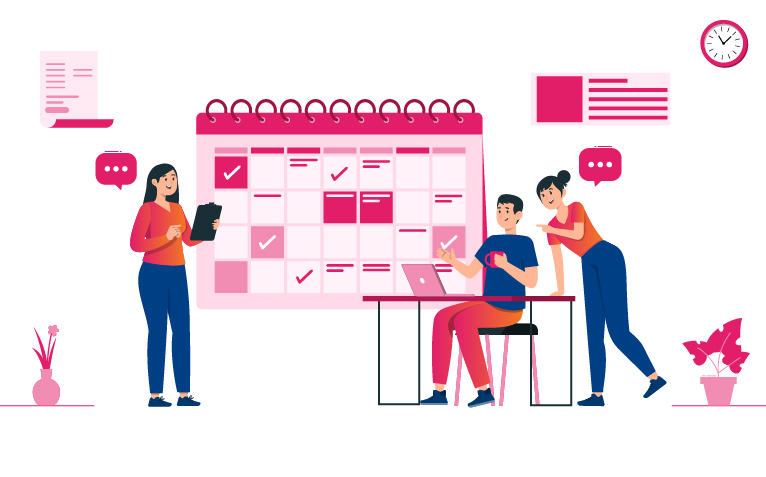3 September, 2025
The New Language of Care: Why Rostering Needs to Speak Human, Not Just Numbers
Rostering
6 min read

Sarah, a support worker, gets her roster late on Sunday night. She had plans with her kids, but a last-minute shift change threw everything out. On Monday morning, she walks into a client’s home she’s never met before, with no context beyond a name and address. The client, already anxious about having yet another unfamiliar face in their living room, struggles to connect.
On paper, the shift is covered. The numbers line up. But in reality, both Sarah and the client feel the strain. The roster did its job as a spreadsheet, but not as a tool for people.
This is the problem with the “old language” of rostering. It speaks in hours, shifts, and compliance, but not in trust, relationships, and well-being. And in the care sector, where people are at the heart of every interaction, that simply isn’t enough anymore.
Beyond Numbers: Why Rostering Needs a Human Touch
Rostering has traditionally been treated like an administrative chore, something to “get done” so compliance is met, staff are allocated, and budgets are balanced. But the truth is, a roster is far more than a schedule. It’s the invisible backbone of the care experience.
For support workers, the roster dictates their work–life balance, financial security, and even their mental health. For clients, it defines consistency, trust, and quality of care. For providers, it impacts retention, reputation, and compliance.
When rosters are built with only numbers in mind, they risk becoming cold, transactional documents. But when they “speak human,” they become powerful tools for connection, stability, and better outcomes.
The Human Cost of Numbers-Only Rostering
The care industry is already under pressure. Staff shortages, high turnover, and burnout are ongoing challenges. But rostering can either ease these pressures or make them worse.
- For workers: Ignoring their preferences or overloading them with shifts creates fatigue and disengagement. Many leave not because of the clients they support, but because of the stress created by poor scheduling.
- For clients: Frequent changes in carers can feel disruptive and even unsafe. Continuity is vital, particularly for people living with disability, aged care clients, or anyone who thrives on routine and familiarity.
- For providers: High turnover, missed shifts, and low morale translate into real costs, financial and reputational.
When rostering is handled without empathy, it undermines the very purpose of care, to support people with dignity and consistency.
The New Language of Care
So, what does it mean for rostering to “speak human”?
It’s about seeing rosters as more than a puzzle of hours and shifts. It’s about recognising the people behind every entry, their needs, preferences, and relationships. A human-centred roster should:
- Match carers and clients thoughtfully, not randomly.
- Protect staff wellbeing, avoiding overscheduling and burnout.
- Offer clarity and predictability, while allowing flexibility where needed.
- Support continuity of care, so clients feel secure and respected.
Put simply: the new language of care blends efficiency with empathy. Numbers still matter, but they should serve the people, not the other way around.
Human-Focused Features That Make a Difference
Certain rostering features can transform the way care organisations operate, helping them truly “speak human.”
For example, carer and client matching ensures the right people are paired together, building trust and continuity. Real-time notifications ease stress by keeping everyone updated instantly when shifts or schedules change. With mobile access, carers have clarity and control at their fingertips, allowing them to check rosters, report progress, and stay informed wherever they are. Integrating care plans into rostering means workers can understand the individual, not just the shift, while fatigue and workload tracking help protect staff wellbeing by preventing overscheduling and burnout. Finally, transparent communication tools strengthen trust across coordinators, carers, and clients.
When these features are in place, rosters stop feeling like cold lists of numbers. Instead, they become living documents that support both people and care outcomes.
Rosters: A Tool for Support, or a Source of Stress
Think of a roster like a map. If it’s drawn with only straight lines and no consideration for the terrain, travellers will stumble, get lost, or give up. But if it reflects the real landscape, hills, rivers, shortcuts, it becomes a tool that guides and supports.
For a support worker, a roster that respects their wellbeing can be the difference between thriving in their role or burning out. For a client, a consistent and thoughtful roster can mean the difference between feeling supported and feeling like a number.
This is why organisations must rethink rostering not as admin, but as strategy. Done right, it builds loyalty, reduces turnover, and improves care quality. Done poorly, it creates frustration and churn.
Where Technology Supports Humanity
Here’s the good news: technology has evolved to help care providers build rosters that are both efficient and empathetic.
Modern rostering platforms automate the heavy lifting, like compliance tracking, shift updates, and Accounting integration, while giving coordinators the space to focus on people. Instead of chasing last-minute calls or drowning in spreadsheets, managers can spend time listening to staff, supporting clients, and solving challenges that matter.
Solutions like RotaWiz are designed with this balance in mind. By combining smart rostering with real-time communication and care-focused features, they make it easier for providers to create rosters that work for everyone. Workers gain transparency and flexibility. Clients get continuity and trust. Providers stay compliant without losing the human touch.
The technology doesn’t replace human judgment; it empowers it.
Building a Future Where Care Speaks Human
The future of care isn’t about choosing between numbers and people. It’s about blending both, so efficiency and empathy work hand in hand. Rosters will always need to tick compliance boxes and balance budgets, but they should also reflect the values of trust, well-being, and dignity.
By adopting human-centred rostering, care organisations can:
- Improve worker satisfaction and retention.
- Strengthen client relationships and outcomes.
- Reduce admin burdens for coordinators.
- Enhance compliance without adding red tape.
It’s a win-win that directly impacts the quality of care.
Final Takeaway
Care is, at its core, about people, not numbers on a page. Rostering that “speaks human” ensures that support workers feel valued, clients feel respected, and providers deliver services that go beyond compliance.
With the right mindset and the right tools, a roster becomes more than a schedule. It becomes a bridge between efficiency and empathy, a living document that empowers everyone it touches.
In the end, numbers will always be part of rostering. But the language of care is spoken in trust, consistency, and compassion. And when rosters reflect that, the whole sector moves forward together.


